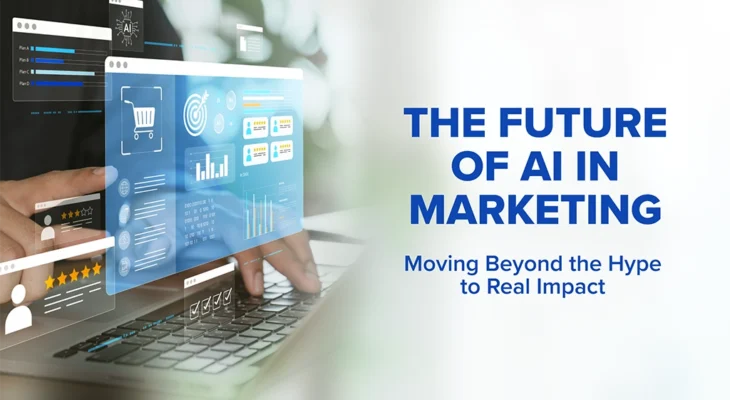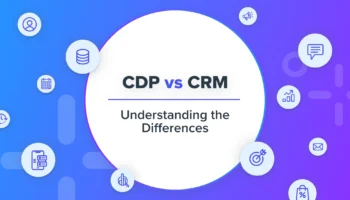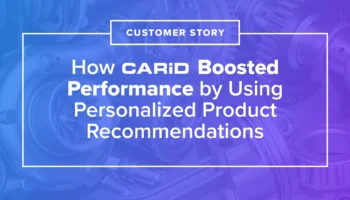What does the future of AI in marketing really look like? That was the central question explored in a recent Blueshift webinar featuring Chief AI Officer and Co-founder, Manyam Mallela, Principal Solutions Consultant, Eric Gordon, and VP of Marketing, Janet Jaiswal. The conversation covered just that, and much more, from real-world use cases to the next frontier of autonomous, agentic AI systems.
This article distills the most impactful insights from that conversation and explores what the next phase of AI means for marketing teams. In fact, 56% of marketers say their company is already actively implementing AI, showing just how rapidly these technologies are becoming foundational to marketing success.
TL;DR
AI is no longer just a support tool—it’s becoming a core engine for modern marketing. This blog breaks down key insights from Blueshift’s recent webinar, exploring how predictive, generative, and agentic AI are transforming the way marketers work.
- Predictive AI: Helps teams anticipate behavior, prioritize audiences, and time campaigns more effectively.
- Generative AI: Accelerates content creation, testing, and personalization at scale.
- Agentic AI: Powers autonomous systems that test, optimize, and adapt campaigns without manual input.
- Real-world example: Zumper used Blueshift’s Campaign Optimizer Agent to boost performance and automate contextual personalization.
- Looking ahead: Agentic AI will reshape marketing operations—giving marketers more time for strategy, less time spent on setup.
How AI Is Transforming Marketing Operations Today
AI is becoming a key part of how all the tools in a modern marketing system work together. According to Blueshift’s survey of 300 U.S. marketers, 80% of marketing leaders believe AI-powered cross-channel marketing has increased customer lifetime value.
Marketing teams are using AI to:
- Automate time-consuming manual tasks like segmentation and content testing
- Improve targeting and decision-making through predictive analytics
- Deliver hyper-personalized experiences across email, web, and mobile
- Refocus internal bandwidth toward more strategic planning and creative execution
But this acceleration comes with responsibility. As Chief AI Officer Manyam Mallela emphasized, AI use must be paired with transparency, data integrity, and customer trust, particularly in use cases like chatbots or personalization engines that operate close to the customer.
“AI is making it possible to focus on the strategic aspects of campaigns by streamlining repetitive and time-consuming tasks.” — Janet Jaiswal
What Are the Three Types of AI Driving Modern Marketing?
Understanding AI’s role in marketing starts with recognizing its three distinct types. Each serves a different function, and together, they create a powerful ecosystem.
1. Predictive AI
Predictive AI uncovers patterns in customer behavior to forecast outcomes like purchase likelihood, churn risk, and engagement timing. It helps teams:
- Build more accurate audiences
- Choose optimal send times
- Prioritize high-value segments
- Deliver relevant messages before behavior happens
“Almost all the customers I work with now are incorporating multiple channels in a single campaign—and delivering the right message on the right channel for each individual based on predictive scores.” — Eric Gordon
2. Generative AI
Generative AI supports speed and creativity. It enables marketers to produce personalized content quickly and at scale, whether that’s:
- Writing subject lines and headlines
- Generating visual assets and product descriptions
- Scaling multivariate copy testing
3. Agentic AI
Agentic AI represents the next leap forward. These systems don’t just assist. They act.
Agentic AI can:
- Break down workflows into automated tasks
- Generate content, build variants, and launch A/B tests
- Monitor performance metrics and reallocate in real time
- Continuously iterate to meet campaign goals, all without manual oversight
“This is where truly agentic systems would add real verifiable value, not only doing it once, but scaling it many times over.” — Manyam Mallela
This evolution moves marketing beyond AI-enhanced support and into a new era of AI-empowered operations.
How Blueshift’s Campaign Optimizer Agent Automates Marketing Strategy
One of the most compelling examples of Agentic AI in action is Blueshift’s Campaign Optimizer Agent. This AI-powered system takes the repetitive and time-intensive aspects of testing and optimization and makes them automatic.
Here’s what it does:
- Audits active campaigns to identify testing opportunities
- Uses customer data to suggest multiple content variants, including subject lines, preheaders, and body copy
- Builds Liquid personalization logic based on profile data such as loyalty points or purchase behavior
- Launches A/B or multivariate tests and continuously reallocates traffic
- Surfaces statistically significant results in real time
“It’s not just about when someone is likely to open or click—it’s about when they’re likely to come through and make a purchase. That full-funnel view is what drives performance today.” — Eric Gordon
What once required hours of setup and ongoing analysis now runs continuously in the background. Teams can scale insights across campaigns without needing to manually intervene.
Real-World Example: Zumper’s Success with Agentic AI in Marketing
Blueshift’s Campaign Optimizer Agent was piloted with Zumper, a leading real estate marketplace. The outcome highlights how agentic systems unlock new growth levers for B2C brands:
- Experiment volume increased from a few tests to 20 per month
- 16 tests showed statistically significant gains, including improved open and click rates
- Lead quality improved, inbox placement rose, and bot traffic declined
The personalization was highly contextual. Messages reflected property preferences like neighborhood, amenities, and budget. All of it was orchestrated automatically through the agent.
How Agentic AI Is Shaping the Future of AI in Marketing
Blueshift is continuing to invest in Agentic AI across the campaign lifecycle. Upcoming agents will target other time-intensive tasks, including:
- Audience Creation Agents that build dynamic segments from real-time behavior
- Reporting Agents that surface campaign insights and trends
- Multichannel Agents that test and optimize across email, push, and in-app channels
These capabilities are designed not to replace marketers, but to amplify them, giving teams more time, deeper insights, and stronger strategic leverage.
The Future of AI in Marketing Is Agentic
AI in marketing is entering a new chapter, one defined by continuous learning, automated execution, and personalization at scale. This evolution goes far beyond writing subject lines or generating graphics. It’s about building a marketing function that adapts in real time, guided by goals rather than grunt work.
The future of AI in marketing isn’t a distant concept. It’s already here. If you’re ready to see how AI can streamline your workflow and drive better results, take a closer look at Blueshift’s Customer AI.
See how Customer AI can drive smarter marketing




